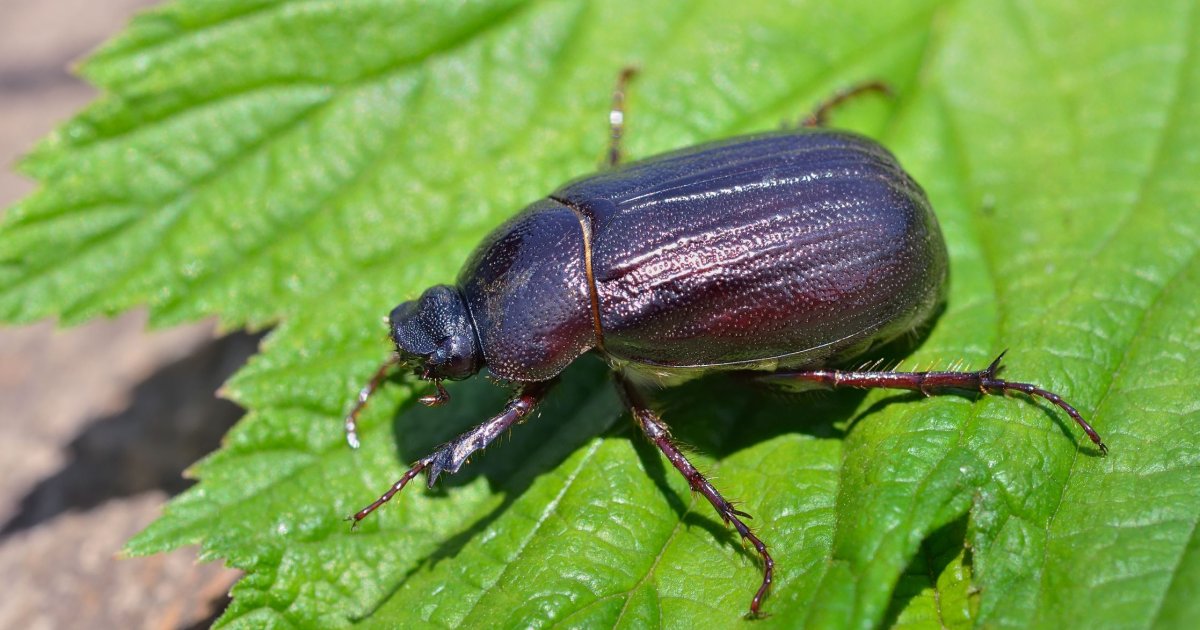The Large Black Chafer Beetle: Embracing a 48-Hour 'Date Night' Schedule

January 18, 2024
This article underwent review in line with the editorial process and policies of Science X. Editors checked the following aspects to ensure the article's credibility:
- Fact-checking
- Peer-reviewed publication
- Reliable source
- Proofreading
Editorial oversight by Andy Fell, UC Davis
Earth's life operates on a 24-hour cycle aligning with the planet's rotation. Animals and plants have innate circadian clocks, which synchronize metabolism and behavior to this day-night cycle. One beetle, however, diverges from this routine.
The large black chafer beetle, Holotrichia parallela – an agricultural pest in Asia operating on a unique 48-hour cycle – was the focus of a recent study published on Jan. 18 in Current Biology. Every alternate night, female beetles come out from the soil, ascend a host plant, and release pheromones to attract males.
Such mating behavior of the female beetles, controlled by a 48-hour 'circa-bi-dian' clock, intrigued a research team led by Walter Leal, professor of molecular and cellular biology at the University of California, Davis, and Jiao Yin at the Chinese Academy of Agricultural Sciences, Beijing. They conducted investigations to determine if the male beetles' ability to discern the females' scent also followed a 48-hour cycle.
Leal's lab, specializing in studying chemical sensing in insects, observed that much like moths and mosquitoes, insects use scent to attract mates. Insects detect smells using their antennae, which possess specialized receptors that respond to distinct airborne chemicals.
The researchers first identified the gene responsible for the receptor in large black chafers that reacts to the female pheromone, also known as L-isoleucine methyl ester or LIME. They initially cloned 14 candidate genes, which eventually led them to identify HparOR14 as the sex pheromone receptor, marking the first identified instance in a beetle species.
After identifying the receptor gene, they were able to measure levels of HparOR14 gene transcripts throughout the beetle's life and its activity over 48 hours. They noticed that on 'date night,' when females would be climbing plants to release scent, HparOR14 transcription was increased post sunset, but receptor activity was low the alternate days. (However, the response to a chemical signal from damaged leaves, indicative of beetle food, remained unchanged day after day.)
The findings demonstrated that male chafers' ability to sense the female sex pheromone indeed operates on a 48-hour circabidian cycle, synchronizing with the female mating conduct.
However, the reason and process behind these 48-hour cycles in large black chafers remain a mystery. Circadian (24-hour) clocks synchronize with cues that change over a 24-hour cycle, such as sunrise and sunset. There are no 48-hour cues in nature that could potentially set the circabidian cycles of large black chafers, including the synchronization process between males and females to determine 'date night.'
Professor Joanna Chiu, Chair of the Department of Entomology and Nematology at UC Davis, and an expert on circadian rhythms, said, 'Twenty-four hour rhythms in physiology and behavior are mostly observed in organisms from bacteria to humans. However, 48-hour rhythms in nature are scarce. This comprehensive study by Professor Leal and his collaborators has given us a detailed understanding of how the circabidian rhythm of pheromone detection in this beetle operates.'
Alongside Professors Leal and Yin, additional authors include Yinliang Wang, Huanhuan Dong, Yafei Qu, Jianhui Qin, Kebin Li, Yazhong Cao and Shuai Zhang from the Chinese Academy of Agricultural Sciences, Beijing; Yuxin Zhou and Bingzhong Ren from the Northeast Normal University, Changchun, China; and Chen Luo from the Beijing Academy of Agriculture and Forestry Sciences.
Journal information: Current Biology
Provided by UC Davis




